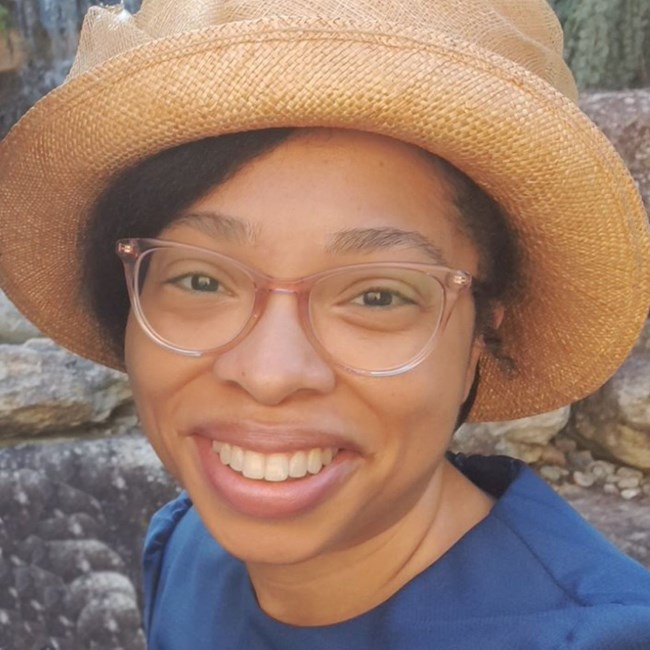Last updated: February 13, 2025
Article
Meet the Mellon Fellows: Dr. Kelli Racine Barnes

Dr. Kelli Racine Barnes
University of Delaware
PhD, History
Host Site: Independence National Historical Park
Fellowship Title: The Nation's Origin Story Fellowship
Project Description: Dr. Barnes will work with the park and the community in acknowledging and honoring the contributions of all Americans. The research will focus on the impact—and the legacies—of people of African descent on nation-building during the revolutionary and early national periods.
Bio:
Kelli Barnes is a scholar whose interests include 18th and 19th-century United States history, Black American girlhood, transatlantic material culture, interpretive planning, and exhibit design. She earned her Ph.D. in History and a graduate certificate in Museum Studies from the University of Delaware, where she was an African American Public Humanities Fellow. Her dissertation, “Quotidian Resistance: Black Girls, Their Girlhood Embroideries, and the History of Education in the Northeastern United States, 1789 – 1852,” is an interdisciplinary examination of the lived experiences of Black girls during the early formation of the nation. During her time at the University of Delaware, Kelli honed her digital humanities skills by working with the award-winning Colored Conventions Project and completing the digital exhibit "Segregated Sands: Delaware's Segregated Beaches During the Jim Crow Era" featured on the Delaware Historical and Cultural Affairs website. Prior to returning to school, Kelli worked in architecture, design, and preservation for over ten years. She previously earned a graduate degree in Historic Preservation from the University of Pennsylvania and an undergraduate degree in Interior Design from Drexel University.
Tell us about your research interests!
My research interests include the Black American experience in United States history, the knowledge brought with them across the Atlantic Ocean when they were taken to be enslaved, and the use of objects to tell those stories. As a child and young adult, I had the opportunity to attend museums and historic sites, but often longed to read and learn about people who looked like my Black American family and my multiracial group of friends mainly of Hispanic, Asian, and Indigenous backgrounds. This work matters to better understand and articulate the formation and development of the United States of America since the first settlers arrived on the land displacing the Indigenous people living in the areas.
How does your research connect to the mission of the National Park Service, which serves both parks and communities?
The National Park Service established Independence National Historical Park to serve as a location to learn more about the ideas that were inspiration for the country's Revolution and the founding and growth of the United States. This research illuminates the various perspectives of revolution, freedom, and liberty, some of which have previously not been considered or included in the narratives being told.
What are you most excited about as you begin your fellowship?
I am most excited about finding the presence, voices, and activities, if it is but a glimpse, of Black American people on the land of the park and the surrounding areas in eighteenth-century Philadelphia. I look forward to sharing these findings with NPS, the visitors, community members, at museum and history conferences, and with anyone else who will find these untold/forgotten/suppressed stories exciting.
Do you have a favorite story about your personal experience with the NPS, or a park or program you admire?
I would not call this a favorite story, but it is treasured memory of a family trip I took with my parents and extended family. I was maybe seven years old when my father chartered a Shortline coach bus and drove our family down to Virginia to visit my grandparents and other relatives for a reunion. During the road trip we stopped at various locations, including Luray Caverns and Skyline Drive in Shenandoah Valley. At seven years old, I do not remember being cognizant of us being at a national park or what that meant to my family, but I remember being amazed by the beauty of the area where my father was born and raised in Virginia.
